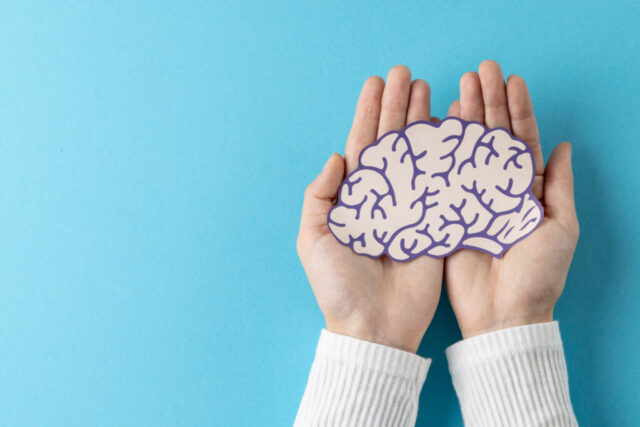Color is a powerful tool in e-commerce website design, influencing customer emotions, perceptions, and purchasing decisions. Understanding color psychology can help you create a visually appealing site that not only attracts visitors but also encourages them to engage and convert. In this blog, we’ll explore the impact of color psychology on e-commerce website design and provide insights on how to use color effectively.

1. Understanding Color Psychology
Color psychology is the study of how colors affect human behavior and emotions. Different colors evoke different feelings and associations, which can significantly influence a customer’s experience and perception of your brand. Here’s a brief overview of some common colors and their psychological effects:
- Red: Often associated with excitement, passion, and urgency. It can stimulate appetite and encourage quick decision-making, making it effective for sales and clearance sections.
- Blue: Represents trust, reliability, and calmness. It is often used by financial institutions and healthcare brands to convey safety and security.
- Green: Symbolizes nature, health, and tranquility. It is commonly used in eco-friendly and wellness brands, evoking a sense of peace and growth.
- Yellow: Associated with happiness, optimism, and energy. It can grab attention and create a sense of cheerfulness but should be used sparingly, as it can be overwhelming in large amounts.
- Orange: Represents enthusiasm, creativity, and friendliness. It’s often used for call-to-action buttons to encourage conversions.
- Purple: Conveys luxury, creativity, and wisdom. It can be effective for brands targeting a high-end market or those looking to inspire creativity.
- Black: Represents sophistication, elegance, and power. It’s commonly used in luxury brands to create a sense of exclusivity.
- White: Symbolizes simplicity, purity, and cleanliness. It can create a minimalist aesthetic and is often used to enhance readability and highlight other colors.
2. Building Brand Identity
Colors play a crucial role in establishing and reinforcing your brand identity. Consistency in color usage across your website, social media, and marketing materials helps create a cohesive brand image that customers can recognize and trust.
Tips for Building Brand Identity with Color:
- Choose a Color Palette: Select a primary color that reflects your brand’s personality and two or three complementary colors to create a harmonious palette.
- Be Consistent: Use your chosen colors consistently across all platforms and touchpoints to build brand recognition.
- Consider Cultural Associations: Be mindful of cultural interpretations of colors, especially if you have a global audience. Colors may have different meanings in different cultures.
3. Guiding User Behavior
The right color choices can guide users through your e-commerce website, directing their attention to key areas and encouraging desired actions.
Tips for Guiding User Behavior:
- Call-to-Action (CTA) Buttons: Use contrasting colors for CTA buttons to make them stand out. For example, if your primary color is blue, an orange or green button can draw attention.
- Navigation and Menus: Use colors that enhance readability and differentiate between categories. Subtle variations can help users quickly identify sections.
- Highlight Offers and Promotions: Use bold colors for banners or promotional sections to attract attention and create a sense of urgency.
4. Creating Emotional Connections
Colors can evoke emotions and create connections with customers. By carefully selecting colors that resonate with your target audience, you can create a more engaging and memorable shopping experience.
Tips for Creating Emotional Connections:
- Know Your Audience: Understand your target market’s preferences and emotional responses to colors. Tailor your color choices to align with their values and desires.
- Use Imagery and Backgrounds: Consider the background colors and images on your site. A visually appealing background can enhance the overall mood and atmosphere of your site.
5. Enhancing Readability and Usability
While color plays a significant role in aesthetics, it’s essential to ensure that your color choices enhance readability and usability. Poor contrast can lead to a frustrating user experience, while effective color combinations can improve accessibility.
Tips for Enhancing Readability:
- High Contrast: Ensure sufficient contrast between text and background colors for easy reading. Dark text on a light background or vice versa is usually most effective.
- Limit Color Use: Avoid using too many colors, which can create visual clutter and confuse users. Stick to your established color palette for a cleaner design.
- Accessibility Considerations: Use tools to test color contrast ratios and ensure your website is accessible to users with visual impairments.
6. Testing and Iterating
Color preferences can vary widely among users, so it’s essential to test your color choices and iterate based on feedback. Conduct A/B testing to see how different color schemes perform in terms of engagement and conversion rates.
Tips for Testing Colors:
- A/B Testing: Experiment with different colors for key elements, such as CTA buttons and headers, to see which versions resonate better with your audience.
- Gather User Feedback: Solicit feedback from customers and website visitors about their color preferences and overall experience.
Conclusion
The impact of color psychology on e-commerce website design cannot be underestimated. By understanding how colors affect emotions, guiding user behavior, and enhancing brand identity, you can create a compelling online shopping experience that drives engagement and conversions. As you design your e-commerce site, keep color psychology in mind, and don’t hesitate to test and refine your choices to align with your audience’s preferences. With thoughtful color usage, you can create a visually appealing and effective e-commerce website that resonates with customers and encourages them to take action.


No responses yet